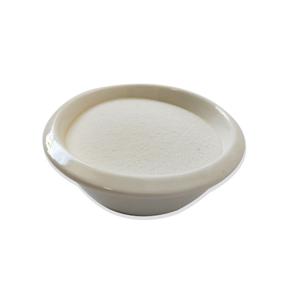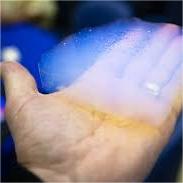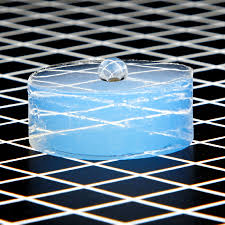Professional industry ceramic supplier, silicon nitride, silicon carbide, aluminum nitride and any other kinds of ceramics.
1. Introduction
Just 24 hours ago, a major materials science breakthrough was announced by researchers at the Fraunhofer Institute: a new sintering technique that boosts the thermal shock resistance of silicon carbide crucibles by over 30%. This innovation is set to revolutionize high-temperature industrial processes—from metal casting to semiconductor production—by extending crucible lifespan and improving energy efficiency.
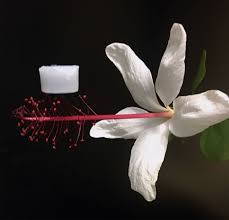
Silicon carbide crucibles are more than just lab or foundry tools. Thanks to their exceptional hardness, thermal conductivity, and chemical inertness, they’ve found surprising roles in everything from aerospace components to artisanal dinnerware. In this article, we’ll unpack what makes silicon carbide so special and why it’s becoming a go-to material across industries.
2. What Is a Silicon Carbide Crucible?
A silicon carbide crucible is a container made from silicon carbide (SiC), an advanced ceramic known for its extreme durability and ability to withstand temperatures above 1,600°C (2,912°F). Unlike traditional clay or graphite crucibles, silicon carbide versions resist thermal shock, oxidation, and corrosion from molten metals like aluminum, copper, and even precious alloys.
These crucibles are typically manufactured through processes like reaction bonding (RBSiC) or sintering, resulting in dense, high-strength structures ideal for repeated heating and cooling cycles.
3. Key Properties That Make Silicon Carbide Stand Out
Silicon carbide is one of the hardest known materials—second only to diamond and cubic boron nitride. But hardness isn’t its only superpower.
- Exceptional thermal conductivity: Heat spreads evenly, reducing hot spots.
- Low thermal expansion: Resists cracking during rapid temperature changes.
- Chemical inertness: Doesn’t react with most molten metals or slags.
- High mechanical strength: Maintains integrity under load at extreme temperatures.
These traits make silicon carbide crucibles indispensable in foundries, laboratories, and even glass manufacturing, where consistency and purity are non-negotiable.

4. Silicon Carbide vs. Other Advanced Ceramics
When choosing high-performance ceramics, engineers often weigh silicon carbide against alternatives like boron carbide and silicon nitride.
Boron carbide vs silicon carbide? Boron carbide (B4C) is harder and lighter, making it ideal for armor applications—but it’s more expensive and less thermally conductive. Silicon carbide strikes a better balance for thermal applications.
Meanwhile, silicon nitride (Si3N4) offers superior fracture toughness and is often used in bearings, cutting tools, and even custom silicon nitride heat shields for aerospace. A silicon nitride crucible factory might specialize in lab-grade containers for reactive melts, but silicon carbide remains the workhorse for general high-temp use.
Even alumina (Al2O3) and zirconia crucibles have their niches—especially where electrical insulation or specific chemical resistance is needed—but they can’t match SiC’s all-around thermal performance.
5. Beyond the Crucible: Other Silicon Carbide Ceramic Products
The versatility of silicon carbide extends far beyond crucibles. You’ll find it in:
- RBSiC silicon carbide tile blocks and silicon carbide ceramic tiles for kiln linings
- Silicon carbide ceramic columns and pillars used in high-temp support structures
- Silicon carbide burner nozzles and silicon carbide bricks for industrial furnaces
- Silicon carbide tubes and thermocouple protection tubes for harsh environments
- Silicon carbide discs, grinding discs, and sanding discs for precision machining
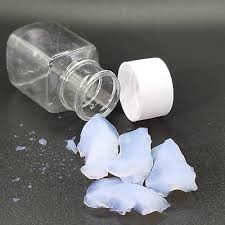
Even in plumbing, silicon carbide ceramic disc taps and quarter-turn valves leverage the material’s wear resistance for long-lasting performance.
6. Surprising Culinary Uses of Silicon Carbide Ceramics
Yes, you read that right—silicon carbide is showing up in your kitchen. While not as common as stoneware or porcelain, high-end manufacturers are experimenting with silicon carbide ceramic dinnerware due to its thermal stability and sleek aesthetics.
Products like silicon carbide ceramic baking dishes, casserole dishes with lids, pie dishes, and even butter dishes are gaining traction among chefs who value oven-to-table versatility. Brands like Staub have inspired designs such as the ‘silicon carbide baking dish Staub’—though true SiC cookware remains niche and premium.
You can also find silicon carbide ceramic plates in black, white, or blue-white porcelain styles, including children’s plates, pasta bowls, salad bowls, and holiday-themed items like silicon carbide Christmas ceramic platters. These aren’t just functional—they’re durable enough for daily use and dishwasher-safe.
However, it’s worth noting: most consumer “silicon carbide” kitchenware is actually a composite or glaze-infused ceramic, not pure SiC. True silicon carbide ceramic baking trays or ramekins are rare and typically custom-made.
7. Choosing the Right Material for Your Needs
Whether you’re melting aluminum in a foundry or serving a casserole at Sunday dinner, material choice matters. For extreme heat and chemical exposure, a silicon carbide crucible is unmatched. For impact resistance in dynamic loads, consider silicon nitride. For cost-effective insulation, alumina or zirconia may suffice.
Always verify purity, manufacturing method (e.g., RBSiC vs. sintered), and intended use. And remember—while silicon carbide ceramic dishes look stunning, they’re not a replacement for standard cookware unless explicitly rated for food contact by regulatory bodies.
8. Conclusion
From molten metal to gourmet meals, silicon carbide crucibles and related ceramics are pushing the boundaries of what’s possible in both industry and everyday life. With ongoing advances in manufacturing—like the recent Fraunhofer breakthrough—the future of silicon carbide looks hotter (and more versatile) than ever.
Our Website founded on October 17, 2012, is a high-tech enterprise committed to the research and development, production, processing, sales and technical services of ceramic relative materials such as 7. Our products includes but not limited to Boron Carbide Ceramic Products, Boron Nitride Ceramic Products, Silicon Carbide Ceramic Products, Silicon Nitride Ceramic Products, Zirconium Dioxide Ceramic Products, etc. If you are interested, please feel free to contact us.

